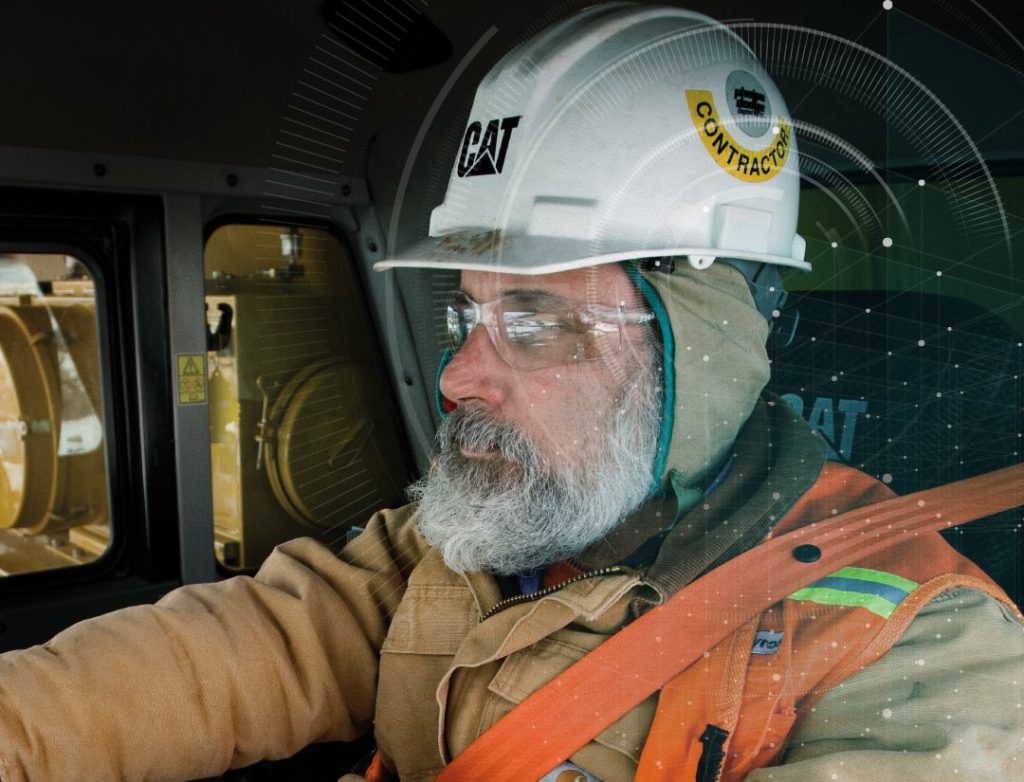Alberta, Canada oil sands major Suncor is in the middle of an accelerated collision avoidance and fatigue management deployment across all of its mine mobile equipment. The fatigue management system installation will be completed across all of its mines by early 2023 and is already fully installed and functioning at Syncrude’s Mildred Lake and Aurora mines.
Suncor has said that the technology has so far demonstrated the potential to reduce fatigue related events by up to 80%. In a presentation given on its 2022 Investor Day on November 29, Suncor said that it is using the Driver Safety System, and additionally confirmed to IM that this refers to Caterpillar’s DSS technology.
During the webcast on the presentation, Peter Zebedee, EV Mining and Upgrading said: “The fatigue management solution instantly alerts our operators if fatigue or distraction sets in. And within a 24 hour day, 7 day a week operation such as ours, fatigue is one of the leading causes of risk to operators. The entire global of this project is to reduce fatalities and injury from fatigue and distraction related incidents. It will allow us to provide our workforce with the required skills to manage fatigue in a healthy way. These technologies support our commitment to prevent mobile equipment contact. We are ahead of schedule on our implementation plan and on track to have the entirety of our mining fleets fully outfitted with both technologies.”
DSS is a configurable two-part system that combines real-time, in-cabin operator alerts for fatigue and distraction events with remote monitoring services to notify site operations when intervention may be needed. The in-cabin portion is referred to as the In Vehicle System (IVS). The offboard portion is referred to as DSSi and includes the Database and Monitoring Center. Events and heartbeats are collected through the DSSi interface. The DSS is intended to provide non-intrusive fatigue and distraction notifications to operators and site management. Caterpillar emphasises, however, that use of the system does not replace basic safety precautions and procedures for operating a machine.
A ruggedised, fanless, high-powered computer is the core of the DSS, while a driver facing camera and Infrared (IR) lights are used for eye and face tracking. A forward facing camera also measures hard braking and cornering or impacts. A speaker relays audible alerts to the operator, and a GPS module tracks the truck location and determines the speed and orientation of the vehicle. An electric motor also vibrates the seat to alert the operator.
DSS measures the amount of eyelid closure and the position of the head during machine operation when the system is active. When eye closure or head orientation exceeds configured parameters and configurable system thresholds are met, the system creates an event, immediately notifying the operator with an audible alarm and/or seat vibration alert and sending an event to the monitoring centre when connected to a network. A human intervention layer for confirmed fatigues is implemented through an agreed “Fatigue Intervention Plan” with the company. Regular reporting provides managers with business intelligence to effect change to the root cause of fatigue in the business.











